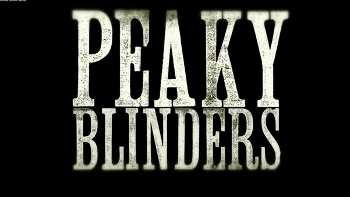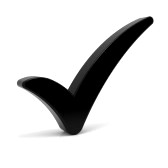PEAKY BLINDERS How much truth in the fiction? SERIES 3 
The BBC series about a criminal gang in Birmingham certainly makes gripping TV, and for the second they are looking at issues of what happened to the city's children in care. The second episode of series 3 which was shown on the BBC last night (12th May 2016), introduced the 'charitable institution' for boys and girls which was being set up by Thomas and Grace Shelby in Birmingham in 1924. Here we have a look at this story so far and see how well it stands up against the facts we know: | The story | Fact | Our verdict | Thomas and Grace Shelby are setting up a 'charitable institution' for boys and girls | The last quarter of the nineteenth century and the start of the twentieth such a proliferaton of children's homes and orphanages in the city set up by all sort of people and institutions including industrialists. A list of these insitutions for children in Birmingham in the 1920s can be found here on this website |  | | The institution is described as a cover for Thomas's dealings with the Russians | With 100s of children's and orphanages set up in England by all sorts of people and organisations, it is likely that not all were set up for the entirely philamthropic reasons. Many, we can assume, were established largely to improve the founder's standing in society (and perhaps earn them a knighthood). Father Hughes decribes the insitution as Thomas' "ambition for respectability" and "a place of false charity".I wonder if Grace understood that her charity for children was already so tainted? |  | | We are introduced to Father John Hughes of St Mary's Boys' Reformatory | The Catholic church was indeed very active in providingcare for the city's abandoned, destitute and orphanedchildren. Birmingham had several cathollic children'shomes in the 1920s. Reformatory schools were established for children who had committed a crime as an alternative to sending them to jail. They were strict, harsh places. In Birmingham,we had Saltley Refomatory which was known as NortonTraining School for Boys by 1924. Read more about reformatories here. We also had a St Mary's home although this was only for girls. |  | | It seems pretty clear that Father Hughes intends to abuse the children in Shelby's institution. | Tragically, abuse may have been common in our 1920s children's homes. Residential childcare was not a professional job with training, qualifications and supervision as we know it now and because children's homes were run by such a variety of organisations and people, keeping a close eye on each was not always possible. Father Hughes says, in ominous fashion, that he will "stop by from time to time to hear confession from the little creatures" and that for Patrick Jarvis MP it is "just his thing to drop by in the evenings after a few drinks" and will want this arrangement formalised with him as a trustee. A priest and an MP would have both been very respected and very powerful people and so it is likely that people with such standing could have got away with abuse if that is what they did. |  |
As unsavoury as Thomas's plans are for a children's home as a cover for his shady dealings, and as horrifying as Father Hughes' plans are, it seems that they may not be beyond the realms of possibility if we look back as 1920s Birmingham. We look forward to seeing how this storyline develops and will fact-proof further developments on this page. SERIES 2 One episode of the TV series about a criminal gang in Birmingham mentioned the death of a child after being migrated to Australia in the early twentieth century. It's a great watch, but how true is the story that Peaky Blinders is telling? Some doubt has been cast on some fundamental issues - the Peaky Blinders are thought not to have really had razor blades in their caps, for example. We decided to pick apart this one story of Polly's adopted children to see if we could find the truth in the drama. The episode aired on BB2 on 9th October 2014 | The story | Fact | Our verdict | Polly's two children were forcibly taken from her because of her alcoholism and mode of life. | Children could indeed have been removed from a family, particularly, a woman on her own and particularly if she found herself arrested for her behaviour. Babies and young children would generally have been taken to Summerhill in central Birmingham which was a receiving home before they were found a more permanent placement. |  | | Polly said that her two children were adopted to local families. | At this time, such an adoption would have been known as 'boarding out'. A family could apply to take a child, and would be invited to come along to the children's home to make their selection. Splitting up siblings was not uncommon. |  | While the boy stayed with his adoptive family until he was at least 17, the girl's adoption did not work out and she left the new family. | Checks and getting to know each other was rare in boarding out and so many arrangements simply fell apart. The child would run away or be removed. |  | | The child was then migrated to Australia. | This was not unusual then. There was a large agency in Birmingham at the time that specialised in child migrations - The Midddlemore Emigration Home. Hundreds of children were emigrated from Birmingham to the New World in this way - girls would usually have gone into domestic service. |  | | Sadly the girl died of Spring Fever shortly after she arrived. | The fever was perhaps an infectious disease caught on the long boat journey (often two or three weeks) to Australia. This sort of tragedy was not an unusual occurence. |  | Tommy Shelby presented his Aunt Polly with two case files - one for each of her children - detailing all that had happened to them. | If only such neat, comprehensive case files existed for children in care in those days! |  |
5/6 isn't bad! For more information about children's homes in Birmingham at the start of the twentieth century please visit these pages: Birmingham 1929 Erdington Cottage Homes Shenley Fields Cottage Homes Marston Green Cottage Homes Middlemore Emigration Homes
| 






